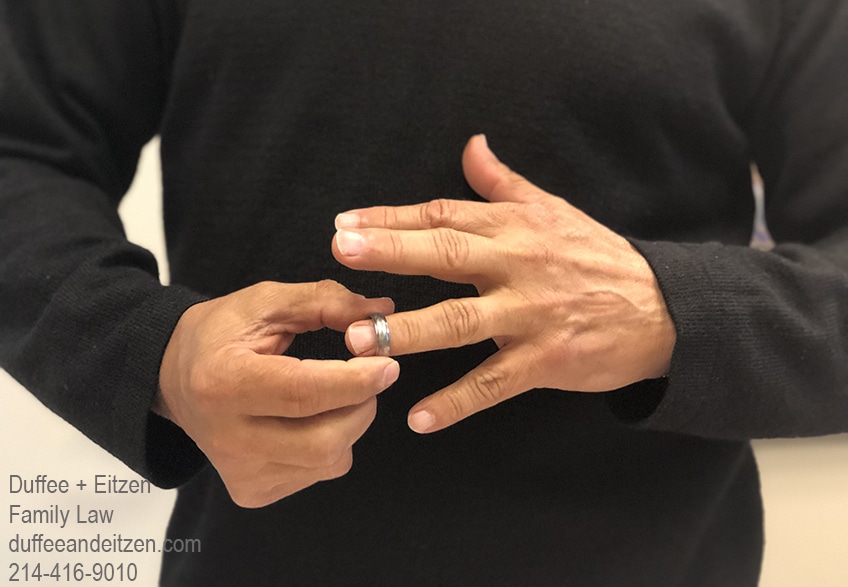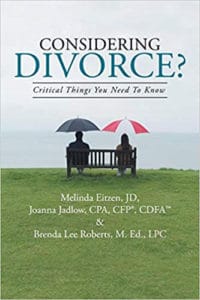There are many ways to get divorced. Below is a description of three approaches to help you determine the best approach for you and your family.
Kitchen Table Approach
In this approach, one or both of you would have a lawyer. However, the lawyer(s) would mainly act as a scribe. You and your spouse would sit down at the kitchen table (so to speak) and work out your deal. In other words, the two of you would tell the lawyers how you are going to divide your assets and debts, what the support payments will be (if any), how you will handle your taxes and the details of your parenting plan. In this model, the lawyers usually do not do any negotiating for you. Their role is to turn your agreement into legally binding documents. These documents will include a decree of divorce, and possibly other documents such as an agreement incident to divorce, real estate documents to transfer the house, and documents to transfer the cars and/or a portion of the 401K.
Pros: This is the least expensive process involving lawyers if you are considering attorney’s fees only.
It can be done fairly quickly if you and your spouse generally agree on things.
Cons: This could be the most expensive process if you strike a poor financial deal for yourself or create an incomplete parenting plan or one that lacks important details for now or the future.
Most people cannot do this effectively due to emotion and the dynamics of their relationship with their spouse. This is a poor choice if one party tends to bully the other.
Litigation Approach
This is the Court model. If you choose to pursue this model, the goal will be to settle if possible. If a settlement cannot be reached between the parties and their lawyers, the Judge will make decisions for you after a hearing or trial.
Pros: Sometimes you and your spouse cannot reach a settlement and you need a third party (a Judge) to bring resolution to your case.
Cons: Litigation is typically the most expensive model.
This model is not private and usually involves more mud-slinging. Also, you do not have the neutral mental health professional and financial planner that the collaborative model provides.
Collaborative Approach
Collaborative Law is a more civilized and respectful, interest-based approach to resolving the case outside of the court system. It typically involves two collaborative lawyers, a neutral mental health professional, and a neutral financial planner.
Pros: This is an excellent way to resolve difficult issues surrounding division of assets or custody of the children in a private, less adversarial manner.
You and your spouse have control over the process and the outcome. The process allows the divorcing couple to come up with creative solutions for their divorce settlement and going through the process can help to increase financial knowledge and begin laying the groundwork for an effective co-parenting relationship.
Cons: The cost is usually less expensive than the litigation model, but it is more expensive than the other non-litigated methods described above.
This option is only available if both parties agree.
The role of a Mental Health Professional (MHP) in the Collaborative approach to divorce is to assist in communication by helping those involved in the case express themselves and listen effectively. The MHP also assists in protecting the collaborative process by encouraging all parties involved to abide by expectations of behavior that are crucial to finalizing the divorce. Finally, the MHP also helps the divorcing parents create a workable parenting plan for them and their children’s future. Throughout the case, the MHP models healthy and effective communication, healthy co-parenting and conflict resolution.
Myth Buster:
Do you and your spouse have to get along well to use the Collaborative Law method? NO. The Collaborative Law method can be used in most (but not all) situations. The professionals who practice this method have been through specific training and are able to handle difficult parenting and personality issues, complex financial matters, addictions, and other challenging situations. And it allows these challenges to be handled in a private setting.
Myth Buster:
Can a lawyer represent both the husband and wife in a divorce if everything is agreed or friendly? NO. It is ethically not allowed because it is a potential conflict of interest. The lawyer can not represent two people against each other that have the potential to have conflicting interests. In a divorce setting, even if you think that you agree upon everything, you certainly have the potential to be in conflict. For example, you want the green couch and so does he, or you want the children on Christmas Day every year and so does she.
By Melinda Hartman Eitzen, a partner at Duffee+Eitzen. She can be reached at melinda@d-elaw.com
If you enjoyed this article, Deciding to Divorce: Not a Quick or Easy Decision, you can read more on this topic in the book CONSIDERING DIVORCE? CRITICAL THINGS YOU NEED TO KNOW, by Melinda Eitzen, JD, Joanna Jadlow, CPA, CFP®, CDFATM& Brenda Lee Roberts, M. Ed. LPC

